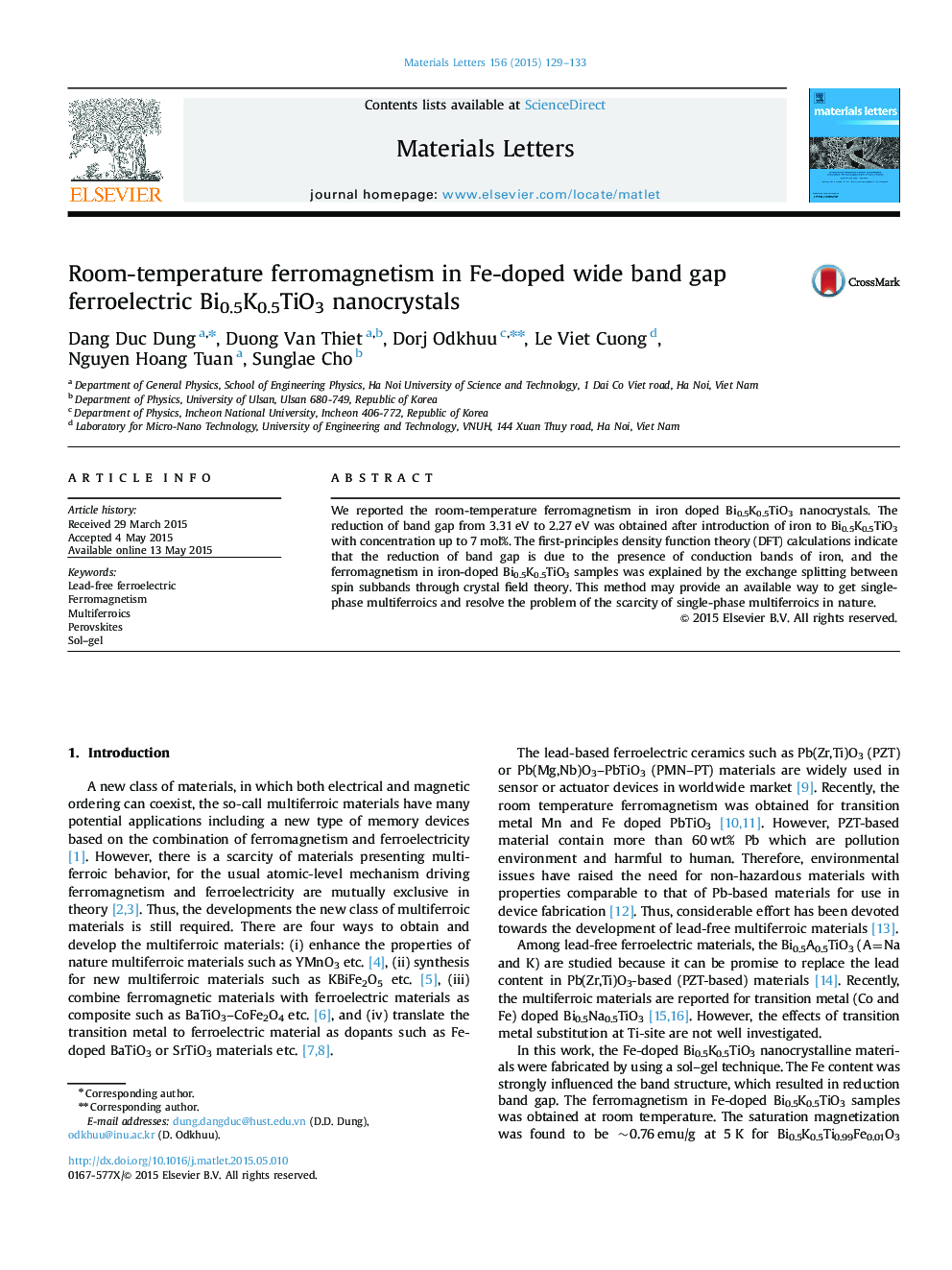| Article ID | Journal | Published Year | Pages | File Type |
|---|---|---|---|---|
| 1642473 | Materials Letters | 2015 | 5 Pages |
•The un-doped and Fe-doped Bi0.5K0.5TiO3 were synthesized by using sol–gel technique.•The reduction of band gap was obtained after introduction of iron to Bi0.5K0.5TiO3.•The un-doped and Fe-doped Bi0.5K0.5TiO3 exhibited room temperature ferromagnetism.•This can be explained by the first-principles density function theory calculations.
We reported the room-temperature ferromagnetism in iron doped Bi0.5K0.5TiO3 nanocrystals. The reduction of band gap from 3.31 eV to 2.27 eV was obtained after introduction of iron to Bi0.5K0.5TiO3 with concentration up to 7 mol%. The first-principles density function theory (DFT) calculations indicate that the reduction of band gap is due to the presence of conduction bands of iron, and the ferromagnetism in iron-doped Bi0.5K0.5TiO3 samples was explained by the exchange splitting between spin subbands through crystal field theory. This method may provide an available way to get single-phase multiferroics and resolve the problem of the scarcity of single-phase multiferroics in nature.
Graphical abstractFigure optionsDownload full-size imageDownload as PowerPoint slide
